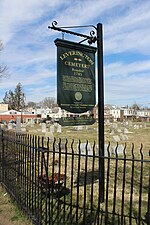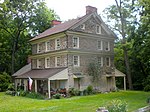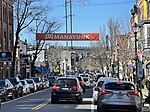AMY Northwest Middle School
1894 establishments in PennsylvaniaArt Deco architecture in PennsylvaniaColonial Revival architecture in PennsylvaniaPublic middle schools in PennsylvaniaRoxborough, Philadelphia ... and 3 more
School District of PhiladelphiaSchool buildings completed in 1929School buildings on the National Register of Historic Places in Philadelphia

The Academy for the Middle Years (AMY) Northwest Middle School, formerly the William Levering School, is a historic middle school located in the Roxborough neighborhood of Philadelphia, Pennsylvania, United States. It is part of the School District of Philadelphia. It was added to the National Register of Historic Places in 1988.
Excerpt from the Wikipedia article AMY Northwest Middle School (License: CC BY-SA 3.0, Authors, Images).AMY Northwest Middle School
Monastery Avenue, Philadelphia
Geographical coordinates (GPS) Address Nearby Places Show on map
Geographical coordinates (GPS)
| Latitude | Longitude |
|---|---|
| N 40.0311 ° | E -75.213 ° |
Address
Monastery Avenue
19127 Philadelphia
Pennsylvania, United States
Open on Google Maps








